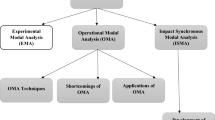Abstract
The discrete-time model of plague is deduced by zero-order holder based on the continuous-time model. Due to the existence of stochastic disturbances, the stochastic model is given corresponding to the discrete-time model. The state estimation and noise reduction of the stochastic model are achieved by designing Kalman filter. Nuclear norm minimization is to structure the low-rank matrix approximation instead of the singular value decomposition in the process of subspace system identification. According to the plague data from the World Health Organization, the system matrices and noise intensity of the model are identified. Simulations are carried out to show the higher approximation capability of the proposed method.
Similar content being viewed by others
References
Xu C B, Zhao Y L and Zhang J F, Information security protocol based system identification with binary-valued observations, Journal of Systems Science and Complexity, 2017, 30(3): 1–18.
He Y Y and Guo J, FIR systems identification under quantized output observations and a large class of persistently exciting quantized inputs, Journal of Systems Science and Complexity, 2017, 30(5): 1061–1071.
Misra S and Nikolaou M, Adaptive design of experiments for model order estimation in subspace identification, Computers and Chemical Engineering, 2017, 100: 119–138.
Yu C P and Verhaegen M, Blind multivariable ARMA subspace identification, Automatica, 2016, 66: 3–14.
Yang H and Li S Y, A novel recursive MOESP subspace identification algorithm based on forgetting factor, Journal of Control Theory and Applications, 2009, 26(1): 69–72.
Fazel M, Hindi H, and Boyd S P, A rank minimization heuristic with application to minimum order system approximation, Proceedings of the 2001 American Control Conference, Arlington, 2001, 4734–4739.
Liu Z and Vandenberghe L, Interior-point method for nuclear norm approximation with application to system identification, SIAM Journal on Matrix Analysis and Applications, 2009, 31(3): 1235–1256.
Li Y F, Zhang Y J, and Huang Z H, A reweighted nuclear norm minimization algorithm for low rank matrix recovery, Journal of Computational and Applied Mathematics, 2014, 263: 338–350.
Liang D and Pelckmans K, On the nuclear norm heuristic for a Hankel matrix completion problem, Automatica, 2015, 51: 268–272.
Yu H L and Christakos G, Spatiotemporal modelling and mapping of the bubonic plague epidemic in India, International Journal of Health Geographics, 2006, 5(1): 1–15.
Christakos G, Olea R A and Yu H L, Recent results on the spatiotemporal modelling and comparative analysis of Black Death and bubonic plague epidemics, Public Health, 2007, 121(9): 700–720.
Monecke S, Monecke H, and Monecke J, Modelling the black death. A historical case study and implications for the epidemiology of bubonic plague, International Journal of Medical Microbiology, 2009, 299(8): 582–593.
Skog L, Hauska H, Spatial modeling of the black death in Sweden, Transactions in GIS, 2013, 17(4): 589–611.
Favoreel W, Moor B D, and Overschee P V, Subspace state space system identification for industrial processes, Journal of Process Control, 2000, 10: 149–155.
Xu K X, Biomathematics, Science Press, Beijing, 2001.
Fang Y W, Optimal Control for Stochastic Systems, Tsinghua University Press, Beijing, 2005.
Boyd S, Parikh N, and Chu E, Distributed optimization and statistical learning via the alternating direction method of multipliers, Foundations and Trends in Machine Learning, 2010, 3(1): 1–122.
Yu M, Liu J C, and Zhao L C, Subspace identification for a stochastic model of bubonic plague, Proceedings of the 35th Chinese Control Conference, Chengdu, 2016, 2020–2024.
Yu M and Liu J C, Subspace identification for a stochastic model of plague, International Journal of Biomathematics, 2016, 9(5): 1–21.
Shang L L, Liu J C, Turksoy K, et al., Stable recursive canonical variate state space modeling for time-varying processes, Control Engineering Practice, 2015, 36: 113–119.
Author information
Authors and Affiliations
Corresponding authors
Additional information
This research was supported by the National Natural Science Foundation of China under Grant Nos. 61374137 and 61773106, and the State Key Laboratory of Integrated Automation of Process Industry Technology and Research Center of National Metallurgical Automation Fundamental Research Funds under Grant No. 2013ZCX02-03.
This paper was recommended for publication by Editor CHEN Jie.
Rights and permissions
About this article
Cite this article
Yu, M., Liu, J. & Zhao, L. Nuclear Norm Subspace System Identification and Its Application on a Stochastic Model of Plague. J Syst Sci Complex 33, 43–60 (2020). https://doi.org/10.1007/s11424-019-8003-9
Received:
Revised:
Published:
Issue Date:
DOI: https://doi.org/10.1007/s11424-019-8003-9




